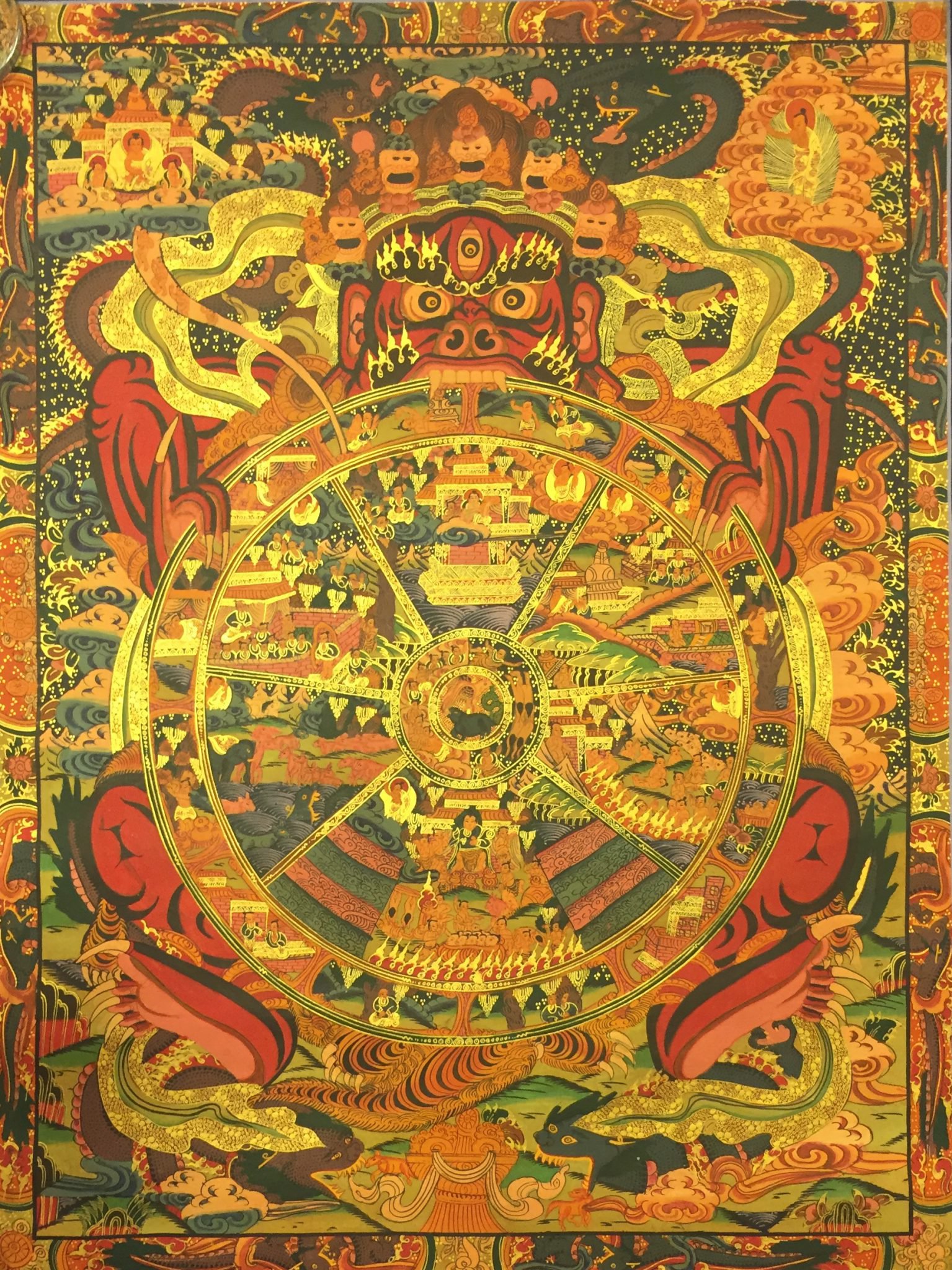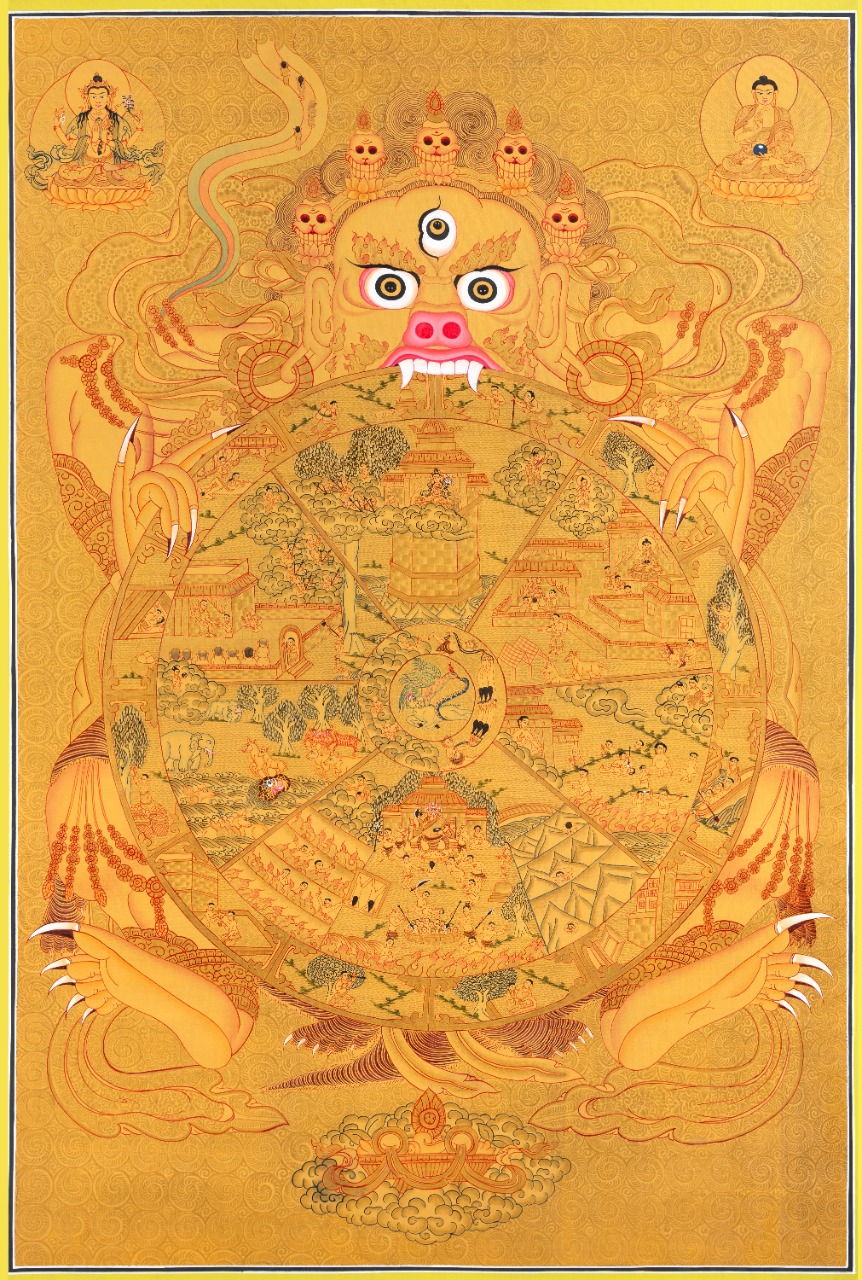

Wheel of Life Thangka Painting
The Wheel of Life is a traditional representation of the samsaric cycle of existence illustrating the essence of the Four Truths of the Buddhism, the existence of earthly suffering, its origin, and cause, the practice path to liberation from suffering and its ending.
Section by section the beautiful thangka painting describes the cause of all evil and its effects. Picture by picture it reminds us that everyone is always his or her own judge and responsible for their own fate, because, according to Karma, causes and their effects are the fruits of one's own deeds.
The fate is represented by Yama, who holds the wheel in his claws by the very top.
Buddha and Wheel of life
This design is believed to have been drawn first by Buddha himself. It portrays the endless life circle of human beings.
A minister demon, Yama, the god of death, clutches the wheel.
The center of the wheel has a small circle with a pig, snake, and rooster that each symbolize a cardinal sin; ignorance, anger, and lust.
The animals are biting one another, which symbolizes their interconnectedness.
Meaning of Main part
The meanings of the main parts of the Painting are:
- The images in the hub of the wheel represent the three poisons of ignorance, attachment, and aversion.
- The second layer represents karma.
- The third layer represents the six realms of samsara.
- The fourth layer represents the twelve links of dependent origination.
- The fierce figure holding the wheel represents impermanence.
- The moon above the wheel represents liberation from samsara or cyclic existence.
- The Buddha pointing to the white circle indicates that liberation is possible.
To get detail information you can go through our blog post The wheel of Life











